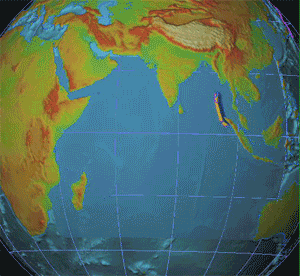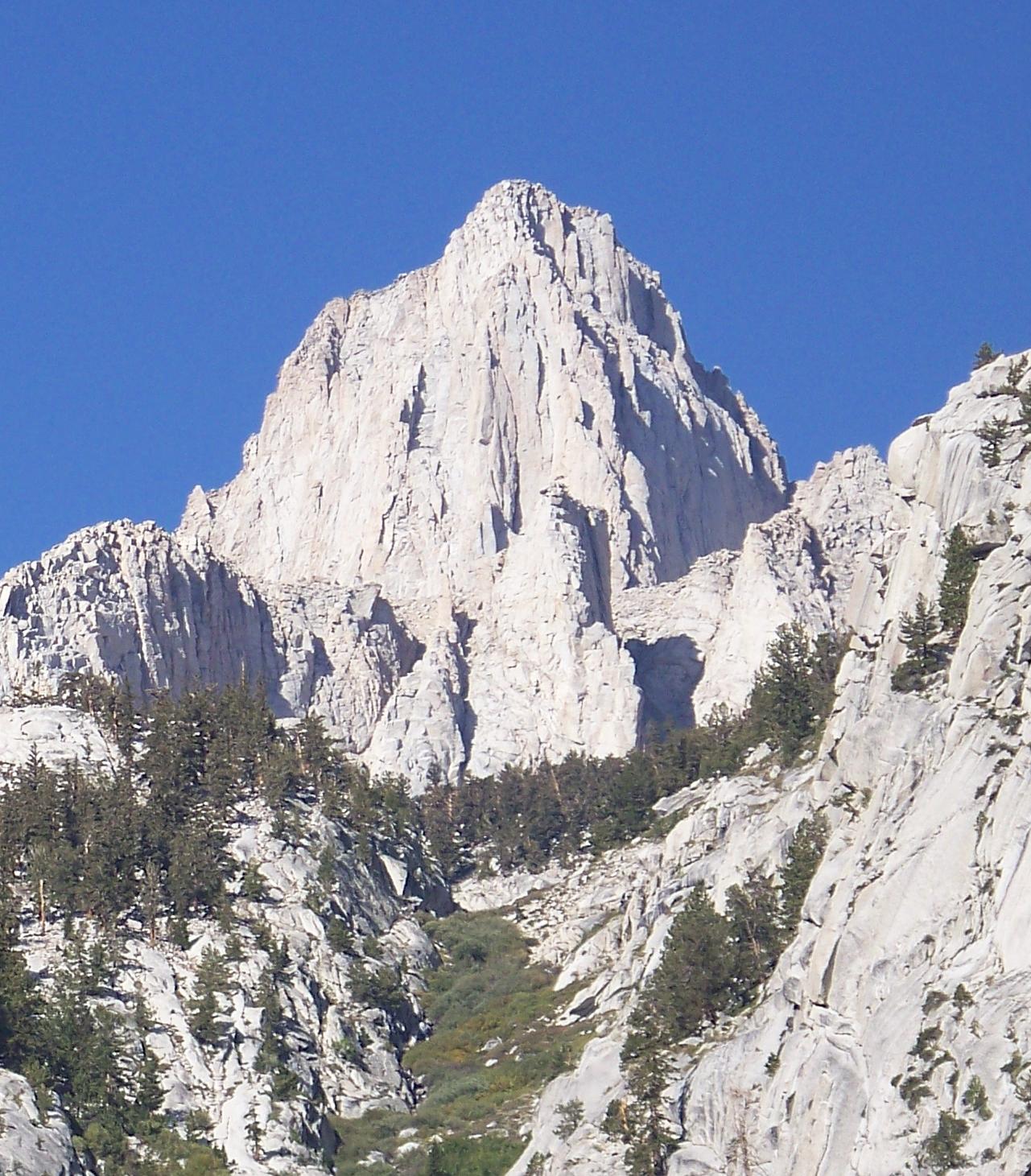|
Advanced National Seismic System
The Advanced National Seismic System (ANSS) is a collaboration of the United States Geological Survey (USGS) and regional, state, and academic partners that collects and analyzes data on significant earthquakes to provide near real-time (generally within 10 to 30 minutes) information to emergency responders and officials, the news media, and the public. Such information is used to anticipate the likely severity and extent of damage, and to guide decisions on the responses needed. Data is collected by eleven regional seismic networks and the ''National Seismic Network'' ("ANSS backbone") of dedicated stations, with additional inputs from overseas seismic networks. Analysis is done at the regional data centers, and at the USGS National Earthquake Information Center (NEIC), with the results posted at the USGS earthquake web page (https://earthquake.usgs.gov/earthquakes/). The National Strong Motion Project of the ANSS has instrumented 168 structures to record their response to very s ... [...More Info...] [...Related Items...] OR: [Wikipedia] [Google] [Baidu] |
Oklahoma Geological Survey
The Oklahoma Geological Survey is a state agency chartered in the Constitution of Oklahoma responsible for collecting and disseminating information about Oklahoma's natural resources, geological formations, and earthquakes. Shortly after Oklahoma became a state, its first legislature passed an enabling act on May 29, 1908 and Governor Charles Haskell signed it into law. The OGS was an offshoot of Oklahoma Territory's Territorial Survey, which was established in 1900. OGS remains the only state geological survey that was created by a provision in the state constitution. In 1924, jurisdiction of the OGS was officially put under the Oklahoma University Board of Regents, and has not been changed since. In 2007, OGS became part of the Mewbourne College of Earth and Energy. History The Oklahoma Geological Society was established on the Oklahoma University campus under an agreement between OU geology professor, Charles N. Gould, and the OU Dean of Arts and Sciences, Professor James ... [...More Info...] [...Related Items...] OR: [Wikipedia] [Google] [Baidu] |
Seismic Networks
Seismology (; from Ancient Greek σεισμός (''seismós'') meaning "earthquake" and -λογία (''-logía'') meaning "study of") is the scientific study of earthquakes (or generally, quakes) and the generation and propagation of elastic waves through planetary bodies. It also includes studies of the environmental effects of earthquakes such as tsunamis; other seismic sources such as volcanoes, plate tectonics, glaciers, rivers, oceanic microseisms, and the atmosphere; and artificial processes such as explosions. Paleoseismology is a related field that uses geology to infer information regarding past earthquakes. A recording of Earth's motion as a function of time, created by a seismograph is called a seismogram. A seismologist is a scientist who works in basic or applied seismology. History Scholarly interest in earthquakes can be traced back to antiquity. Early speculations on the natural causes of earthquakes were included in the writings of Thales of Miletus (), An ... [...More Info...] [...Related Items...] OR: [Wikipedia] [Google] [Baidu] |
Earthquakes
An earthquakealso called a quake, tremor, or tembloris the shaking of the Earth's surface resulting from a sudden release of energy in the lithosphere that creates seismic waves. Earthquakes can range in intensity, from those so weak they cannot be felt, to those violent enough to propel objects and people into the air, damage critical infrastructure, and wreak destruction across entire cities. The seismic activity of an area is the frequency, type, and size of earthquakes experienced over a particular time. The seismicity at a particular location in the Earth is the average rate of seismic energy release per unit volume. In its most general sense, the word ''earthquake'' is used to describe any seismic event that generates seismic waves. Earthquakes can occur naturally or be induced by human activities, such as mining, fracking, and nuclear weapons testing. The initial point of rupture is called the hypocenter or focus, while the ground level directly above it is the epi ... [...More Info...] [...Related Items...] OR: [Wikipedia] [Google] [Baidu] |
Incorporated Research Institutions For Seismology
IRIS (Incorporated Research Institutions for Seismology) was a university research consortium dedicated to exploring the Earth's interior through the collection and distribution of seismographic data. It operated the U.S. National Science Foundation's Seismological Facility for the Advancement of Geoscience (SAGE Facility) until 2023. IRIS programs contributed to scholarly research, education, earthquake hazard mitigation, and the verification of a Comprehensive Nuclear-Test-Ban Treaty. Support for IRIS came from the National Science Foundation, other federal agencies, universities, and private foundations. IRIS supported five major components: * The Data Management Center (DMC) * The Portable Array Seismic Studies of the Continental Lithosphere ( PASSCAL) * The Global Seismographic Network (GSN) * The Transportable Array ( USARRAY) * Education and Public Outreach Program (EPO) IRIS maintained a corporate office in Washington, D.C. IRIS's Education and Public Outreach Program o ... [...More Info...] [...Related Items...] OR: [Wikipedia] [Google] [Baidu] |
International Seismological Centre
The International Seismological Centre (ISC) is a non-governmental, nonprofit organisation charged with the final collection, definitive analysis and publication of global seismicity. The ISC was formed in 1964 as an international organisation independent of national governments that would carry on the work of the International Seismological Summary in collecting and analyzing seismic data from around the world, and particularly to handle increased flow of data from the World-Wide Standard Seismograph Network (WWSSN), also established that year. The ISC considers its prime task to be the collection and re-analysis of all available earthquake seismic date in order to produce definitive data on earthquakes. The ISC's catalog is considered "the most complete and authoritative final depository of global earthquake parameter data." Purpose The main scientific goal of the centre is the definitive compilation of earthquake information and the readings on which they are based. Collect ... [...More Info...] [...Related Items...] OR: [Wikipedia] [Google] [Baidu] |
Albuquerque Seismological Laboratory
Albuquerque ( ; ), also known as ABQ, Burque, the Duke City, and in the past 'the Q', is the most populous city in the U.S. state of New Mexico, and the county seat of Bernalillo County. Founded in 1706 as ' by Santa Fe de Nuevo México governor Francisco Cuervo y Valdés, and named in honor of Francisco Fernández de la Cueva, 10th Duke of Alburquerque and Viceroy of New Spain, it was an outpost on El Camino Real linking Mexico City to the northernmost territories of New Spain. Located in the Albuquerque Basin, the city is flanked by the Sandia Mountains to the east and the West Mesa to the west, with the Rio Grande and bosque flowing north-to-south through the middle of the city. According to the 2020 census, Albuquerque had 564,559 residents, making it the 32nd-most populous city in the United States and the fourth-largest in the Southwest. The Albuquerque metropolitan area had 955,000 residents in 2023, and forms part of the Albuquerque–Santa Fe–Los Alamos co ... [...More Info...] [...Related Items...] OR: [Wikipedia] [Google] [Baidu] |
Hawaiian Volcano Observatory
The Hawaiian Volcano Observatory (HVO) is an agency of the United States Geological Survey (USGS) and one of five volcano observatories operating under the USGS Volcano Hazards Program. Based in Hilo, Hawaii on the Island of Hawaii, the observatory monitors six Hawaiian volcanoes: Kīlauea, Mauna Loa, Kamaʻehuakanaloa (formerly Lōʻihi), Hualālai, Mauna Kea, and Haleakalā, of which, Kīlauea and Mauna Loa are the most active. The observatory has a worldwide reputation as a leader in the study of active volcanism. Due to the relatively non-explosive nature of Kīlauea's volcanic eruptions for many years, scientists were able to study ongoing eruptions safely until 2018 from the observatory's nearby offices and facilities located at Uwekahuna Bluff, the highest point on the rim of Kīlauea Caldera. The summit collapse events during the 2018 eruption of Kīlauea damaged those buildings, necessitating their removal in 2024, so the observatory has since 2018 operated from ... [...More Info...] [...Related Items...] OR: [Wikipedia] [Google] [Baidu] |
Pacific Northwest Seismic Network
The Pacific Northwest Seismic Network, or PNSN, collects and studies ground motions from about 400 seismometers in the U.S. states of Oregon and Washington. PNSN monitors volcanic and tectonic activity, gives advice and information to the public and policy makers, and works to mitigate earthquake hazard. Motivation Damaging earthquakes are well known in the Pacific Northwest, including several larger than magnitude 7, most notably the M9 1700 Cascadia earthquake and the M7.0–7.3 earthquake in about 900AD on the Seattle Fault. The M6.5 1965 Puget Sound earthquake shook the Seattle, Washington, area, causing substantial damage and seven deaths. This event spurred the installation of the Pacific Northwest Seismic Network in 1969 to monitor regional earthquake activity. Early in 1980 PNSN scientists detected unrest under Mt. St. Helens and by March 1980 predicted an eruption was likely to occur "soon". On March 27 the first steam and ash explosion occurred. The PNSN expanded t ... [...More Info...] [...Related Items...] OR: [Wikipedia] [Google] [Baidu] |
California Geological Survey
The California Geological Survey, previously known as the California Division of Mines and Geology, is the California state geology, geologic agency. History Although it was not until 1880 that the California State Mining Bureau, predecessor to the California Geological Survey, was established, the "roots" of California's state geological survey date to an earlier time. As might be expected for a state that owed its existence to the California Gold Rush, gold rush of 1849, the California State Legislature recognized that geologists could provide valuable information. In 1851, one year after California was admitted to the United States, the Legislature named John B. Trask, a medical practitioner and active member of the California Academy of Sciences, as Honorary State Geologist. In 1853 the Legislature passed a joint resolution asking him for geological information about the state. He submitted a report ''On the Geology of the Sierra Nevada, or California Range''. About two month ... [...More Info...] [...Related Items...] OR: [Wikipedia] [Google] [Baidu] |



